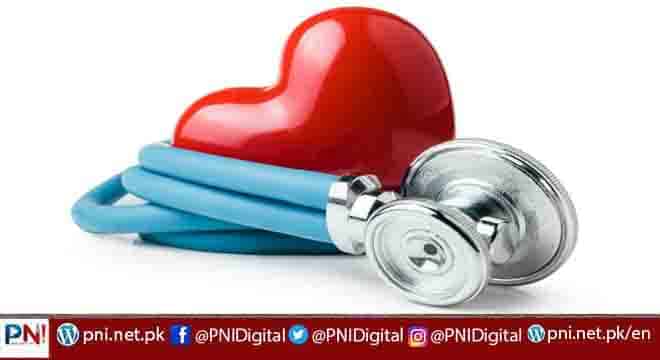Islamabad, April 9 (Online): Call Ambulance immediately if think someone might be having a heart attack. The faster you act, the better their chances.
Chest pain – a feeling of pressure, heaviness, tightness or squeezing across your chest pain in other parts of the body – it can feel as if the pain is spreading from your chest to your arms (usually the left arm, but it can affect both arms), jaw, neck, back and tummy, feeling lightheaded or dizzy, sweating, shortness of breath, feeling sick (nausea) or being sick (vomiting)j, an overwhelming feeling of anxiety (similar to a panic attack), coughing or wheezing, are the symptoms of heart attack.
The chest pain is often severe, but some people may only experience minor pain, similar to indigestion.
While the most common symptom in both men and women is chest pain, women are more likely to have other symptoms such as shortness of breath, feeling or being sick and back or jaw pain.
Cardiac arrest
In some cases, a complication called ventricular arrhythmia can cause the heart to stop beating. This is known as sudden cardiac arrest.
Signs and symptoms that suggest a person has gone into cardiac arrest include: they appear not to be breathing, they’re not moving, they don’t respond to any stimulation, such as being touched or spoken to.
If you think somebody has gone into cardiac arrest and you do not have access to an automated external defibrillator (AED), you should perform chest compressions, as this can help restart the heart.
Chest compression
To do chest compressions on an adult:
Place the heel of your hand on the breastbone at the centre of the person’s chest. Place your other hand on top of your first hand and interlock your fingers.
Using your body weight (not just your arms), press straight down by 5 to 6cm on their chest.
Repeat this until an ambulance arrives.
Aim to do 100 to 120 compressions a minute. Watch the video on “hands-only” CPR from the British Heart Foundation.
Find out about how to resuscitate a child.
Automated external defibrillator (AED)
If you have access to an AED, you should use it. An AED is a safe, portable electrical device that most large organisations keep as part of first aid equipment.
It helps to establish a regular heartbeat during a cardiac arrest by monitoring the person’s heartbeat and giving them an electric shock if necessary.
Find out more about and AED from the Arrhythmia Alliance.
Angina and heart attacks
Angina is a syndrome (a collection of symptoms caused by an underlying health condition) caused by the supply of oxygen-rich blood to the heart becoming restricted.
People with angina can experience similar symptoms to a heart attack, but they usually happen during exercise and pass within a few minutes.
However, occasionally, people with angina can have a heart attack. It’s important to recognise the difference between the symptoms of angina and those of a heart attack. The best way to do this is to remember that the symptoms of angina can be controlled with medicine, but symptoms of a heart attack cannot.
If you have angina, you may have been prescribed medicine (glyceryl trinitrate) that improves your symptoms within 5 minutes. If the first dose does not work, a second dose can be taken after 5 minutes, and a third dose after a further 5 minutes.
If the pain persists, despite taking 3 doses of glyceryl trinitrate over 15 minutes, call 999 and ask for an ambulance.
Follow the PNI Facebook page for the latest news and updates.








